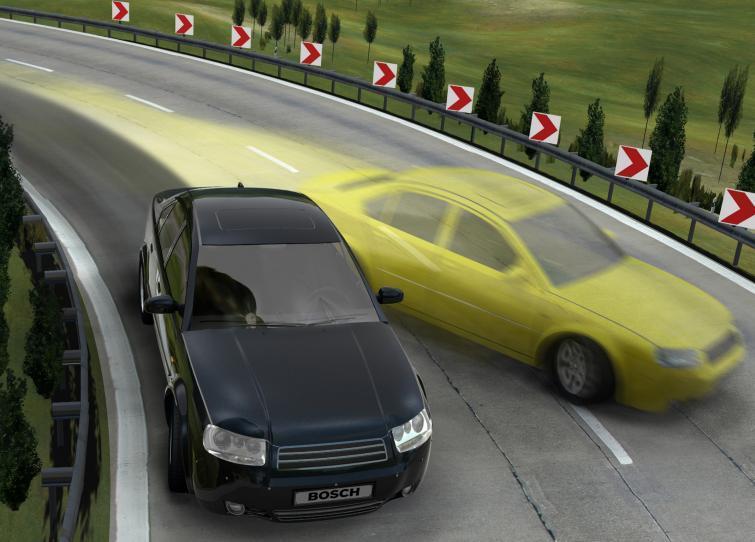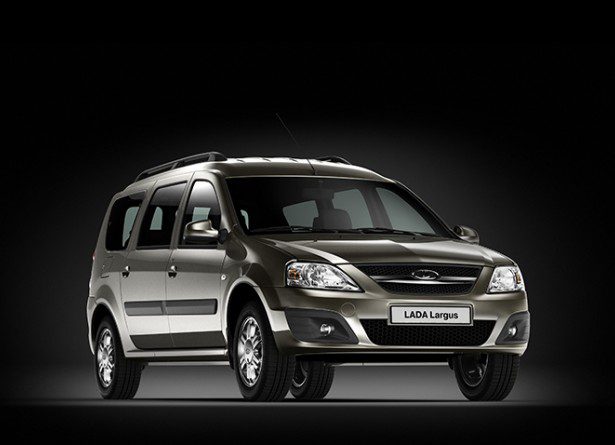
ESP stabilization system - check how it works (VIDEO)
 The ESP system is one of the key elements that improve driving safety. However, according to experts, nothing can replace the flair of the driver.
The ESP system is one of the key elements that improve driving safety. However, according to experts, nothing can replace the flair of the driver.

ESP is an abbreviation for the English name Electronic Stability Program, i.е. electronic stabilization program. This is an electronic stabilization system. Increases the chance of getting out of dangerous situations on the road. This is especially useful on slippery surfaces and when making sharp maneuvers on the road, such as when driving around an obstacle or entering a corner too quickly. In such situations, the ESP system recognizes the risk of skidding at an early stage and prevents it, helping to maintain the correct trajectory.
Cars without ESP, when suddenly you need to change direction, often behave like in a movie:
A bit of history
The ESP system is the work of the Bosch concern. It was introduced to the market in 1995 as equipment for the Mercedes S-Class, but work on this system began more than 10 years earlier.
Over a million ESP systems have been produced in the four years since they entered the market. However, due to the relatively high price, this system was only reserved for higher-end vehicles. However, the cost of producing ESP has come down over time, and the system can now be found in new vehicles in all segments. The stability control system is standard on the subcompact Skoda Citigo (segment A).
Driving on snow - no sudden maneuvers
Other companies have also joined the ESP manufacturing group. It is currently offered by such auto component suppliers as Bendix, Continental, Hitachi, Knorr-Bremse, TRW, Wabco.
Although the term system or ESP has entered the vernacular, only Bosch has the right to use this name. The company has patented the ESP name along with the technological solution. Therefore, in many other brands, this system appears under other names, for example, DSC (BMW), VSA (Honda), ESC (Kia), VDC (Nissan), VSC (Toyota), DSTC (Volvo). The names are different, but the principle of operation is similar. Besides ESP, the most common names are ESC (Electronic Stability Control) and DSC (Dynamic Stability Control).
ADVERTISING
How does it work?
The ESP system is an evolution of the ABS and ASR systems. The long-established anti-lock braking system (ABS) keeps the vehicle steerable and stable in the event of sudden vehicle braking. The ASR system, in turn, makes it easier to get up and move on slippery surfaces, preventing wheel slip. ESP also has both of these features but goes even further.
The ESP system consists of a hydraulic pump, a control module and a number of sensors. The last two elements are electronic components.
The system works as follows: sensors measure the steering angle and vehicle speed and transmit this information to the ESP electronic module, which determines the trajectory of the vehicle theoretically assumed by the driver.
Gasoline, diesel or gas? We calculated how much it costs to drive
Thanks to another sensor that measures the lateral acceleration and the speed of rotation of the car around its axis, the system determines the actual path of the car. When a difference is detected between the two parameters, for example, in the event of a rollover of the front or rear of the vehicle, ESP attempts to cause the opposite effect by creating an appropriate corrective moment of rotation of the vehicle around its axis, which will lead the car to return to the path theoretically intended by the driver. To do this, ESP automatically brakes one or even two wheels while simultaneously controlling engine speed.
If, due to too high a speed, there is still a risk of losing traction, the electronic system automatically takes over the throttle. For example, if a rear-wheel drive vehicle is threatened by rear-end wobble (oversteer), ESP reduces engine torque and brakes one or more wheels by applying brake pressure. This is how the ESP system helps keep the car on the right track. Everything happens in a split second.
This is how the video prepared by the Bosch concern looks like:
Workout is slippery without esp
Additional functions
Since its introduction on the market, the ESP system has been constantly upgraded. On the one hand, the work is about reducing the weight of the entire system (the Bosch ESP weighs less than 2 kg), and on the other hand, increasing the number of functions that it can perform.
ESP is the basis for, among other things, the Hill Hold Control system, which prevents the car from rolling when driving uphill. The brake system automatically maintains brake pressure until the driver presses the accelerator again.
Other examples are features such as brake disc cleaning and electronic brake pre-filling. The first is useful during heavy downpours and consists in the regular approach of the pads to the brake discs, imperceptible to the driver, in order to remove moisture from them, which causes a lengthening of the braking distance. The second function is activated when the driver abruptly removes the foot from the accelerator pedal: the brake pads approach the minimum distance between the brake discs in order to ensure the shortest possible reaction time of the brake system in the event of braking.
Aquaplaning - learn how to avoid slipping on wet roads
The Stop & Go function, in turn, extends the range of the Adaptive Cruise Control (ACC) system. Based on data received from short-range sensors, the system can automatically brake the vehicle to a standstill and then accelerate without driver intervention if road conditions permit.
The Automatic Parking Brake (APB) is also based on ESP. When the driver presses the switch to activate the parking brake function, the ESP unit automatically generates pressure to press the brake pads against the brake disc. The built-in mechanism then locks the clamps. To release the brake, the ESP system builds up pressure again.
Euro NCAP, the car safety research organization known for crash testing, awards additional points for having a vehicle with a stabilization system.
Expert look
Zbigniew Veseli, director of the Renault driving school:
- The introduction of the ESP system in the equipment of cars has become one of the most important measures in the work to improve driving safety. This system effectively supports the driver when he is at risk of losing control of the vehicle. Basically, we mean skidding on slippery surfaces, but ESP is also useful when you need to make a sharp movement of the steering wheel in order to go around an unexpected obstacle on the road. In such a situation, a car without ESP may even roll over. At our school, we train on slippery surfaces using ESP and almost every cadet is very surprised by the possibilities that this system gives. Many of these drivers say that the next car they buy will be equipped with ESP. However, the capabilities of this system should not be overestimated, because, despite the advanced technology, it only works up to a certain limit. For example, when driving very fast on an icy surface, this will not be effective. Therefore, it is always recommended to use common sense and treat this type of security system as a last resort.
Wojciech Frölichowski
